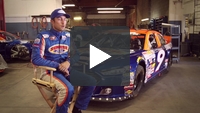Honda Pilot Radiator Support
- Highest Quality Parts
- 100% Guaranteed
- 90-Day Free Returns
- Limited Lifetime Warranty
- No Restocking Fees
- Fast Shipping
-
2019 - 2022 Honda Pilot Radiator Support
Upper Radiator Support Reinforcement for PILOT 2019-2022/PASSPORT 2019-2021, Plastic, Honda, Replacement
2019-2021 HONDA PILOT: Center Beam, Upper OEM # 71160-TG7-A50
, Partslink #: HO1041111 -
2016 - 2022 Honda Pilot Radiator Support
2016-2022 HONDA PILOT: Side Member, LH , , ,OEM # 60716-TZ5-A00ZZ
, Partslink #: HO1225220 -
2016 - 2022 Honda Pilot Radiator Support
2016-2022 HONDA PILOT: Side Member, RH , , ,OEM # 60616-TZ5-A00ZZ
, Partslink #: HO1225219 -
2016 - 2022 Honda Pilot Radiator Support
Radiator Support Assembly for Honda Pilot 2016-2022, Ridgeline 2017-2020, Steel Construction, Replacement
2016-2021 HONDA PILOT: Assy OEM # 60400-TG7-315ZZ
, Partslink #: HO1225184 -
2016 - 2022 Honda Pilot Radiator Support
Steel Radiator Support Center Bracket for 2016-2022 Honda Pilot, 2019-2021 Honda Passport, Replacement
RADIATOR SUPPORT BRACKET, CENTER, MADE OF STEEL
OEM #: 71165-TG7-A00, Partslink #: HO1225189 -
2016 - 2018 Honda Pilot Radiator Support
Upper Reinforcement Radiator Support for 2016-2018 Honda Pilot, Plastic Replacement
2016-2018 HONDA PILOT: Upper OEM # 71160-TG7-A00
, Partslink #: HO1041110 -
2012 - 2015 Honda Pilot Radiator Support
Radiator Support Assembly for PILOT 2012-2015, Steel, Replacement
PILOT 12-15 RADIATOR SUPPORT, Assembly, Steel
OEM #: 60400-SZA-A01ZZ, Partslink #: HO1225174 -
2009 - 2015 Honda Pilot Radiator Support - Center
Radiator Support Center and Hood Latch Support for 2009-2015 Honda Pilot, Replacement
2009-2015 HONDA PILOT: Trans Cooler Bracket OEM # 60440-SZA-A00
, Partslink #: HO1222101 -
2009 - 2011 Honda Pilot Radiator Support Replacement
Radiator Support Assembly for Honda Pilot 2009-2011, Steel Construction, Replacement
PILOT 09-11 RADIATOR SUPPORT, Assembly, Steel
OEM #: 60400-SZA-A00ZZ, Partslink #: HO1225175 -
2006 - 2008 Honda Pilot Radiator Support Replacement
Radiator Support Assembly for Honda Pilot 2006-2008, Black Steel, Replacement
PILOT 06-08 RADIATOR SUPPORT, Assembly, Black, Steel
OEM #: 60400-S9V-306ZZ, Partslink #: HO1225148 -
2005 - 2005 Honda Pilot Radiator Support Replacement
Radiator Support Assembly for 2005 Pilot, Black Steel, Replacement
PILOT 05-05 RADIATOR SUPPORT; Assembly; Black; Steel
OEM #: 60400-S9V-A01ZZ, Partslink #: HO1225143 -
2003 - 2004 Honda Pilot Radiator Support Replacement
Radiator Support Assembly for 2003-2004 PILOT, Black Steel, Replacement
PILOT 03-04 RADIATOR SUPPORT; Assembly; Black; Steel
OEM #: 60400-S9V-308ZZ, Partslink #: HO1225137
Welcome to Go-Parts,
Your Go-To Place for Auto Parts!
Your Go-To Place for Auto Parts!
Are you looking for high-quality, affordable auto parts to enhance your vehicle's performance and reliability? You've come to the right place! Our auto parts are designed to meet and exceed industry standards, ensuring the best possible driving experience for you and your loved ones.
💎 Why Choose Our Auto Parts?
🏆 OEM-Quality: Our aftermarket replacement auto parts are engineered to match the quality and performance of your vehicle's original equipment, without the hefty price tag. Buy OEM-quality parts for discount prices and save BIG on your next auto parts purchase!
🛡️ Safety Assured: Your safety is our top priority. All our auto parts have passed relevant national safety standards, giving you the confidence and peace of mind you need while driving.
🚚 Fast & Secure Shipping: Don't wait around for your new auto parts! Our reliable shipping service ensures you get your parts quickly and safely, so you can enjoy your vehicle's improved performance in no time!
🔒 Go-Parts' Unbeatable Guarantees:
💰 100% Money-Back Guarantee: We stand by the quality of our products. If you're not satisfied with your purchase, we'll give you a full refund, no questions asked!
🔄 90-Day Return Policy: Changed your mind or need a different product? No problem! With our generous 90-day return policy, you can return your auto parts and get the perfect fit for your vehicle.
🏅 Limited Lifetime Warranty: We believe in our auto parts, and we know you will too. That's why we offer a limited lifetime warranty on our products, giving you the assurance you need for a long-lasting, hassle-free investment.
Don't miss out on this opportunity to upgrade your vehicle with our high-quality, affordable auto parts.
Experience the Go-Parts difference today!
Customer-friendly

- No-Hassle Returns
- Live Representatives
Trusted brands

- DOT/SAE Certified
- Limited Lifetime Warranty
Fast Shipping

- Most Orders Shipped Priority Mail
- Distribution Centers in NJ, GA, NV
Secure Shopping

- 2048-Bit SSL Encrypted
Proud Partner of
Ryan Partridge & Sunrise Ford Racing
Proud Partner of
Rick Ware Racing
Proud Partner of
Roberts Racing
ResellerRatings























